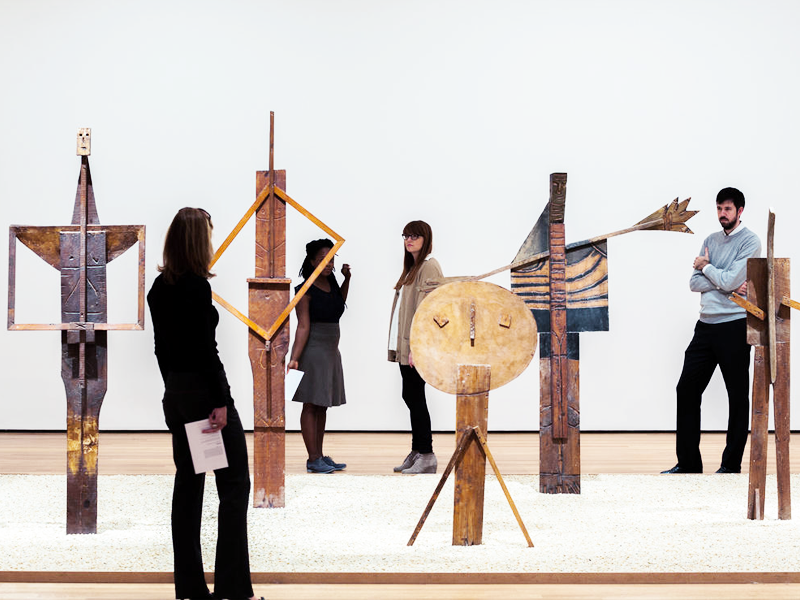
7 popular and important books for art managers
The Art of the Turnaround: Creating and Maintaining Healthy Arts Organizations by Michael M. Kaiser
Many arts organizations today find themselves in financial difficulties because of economic constraints inherent in the industry. While other companies can improve productivity through the use of new technologies or better systems, these approaches are not available in the arts.
The performing arts industry faces a severe gap between earnings and expenses. Typical approaches to closing the gap—raising ticket prices or cutting artistic or marketing expenses — don’t work. What, then, does it take to create and maintain a healthy arts organization? Michael M. Kaiser has revived four major arts organizations: the Kansas City Ballet, the Alvin Ailey American Dance Theater, American Ballet Theatre, and London’s Royal Opera House. In The Art of the Turnaround he shares with readers his ten basic rules for bringing financially distressed arts organizations back to life and keeping them strong.
Management and the Arts by William J. Byrnes
It provides you with theory and practical applications from all management perspectives including planning, marketing, finance, economics, organizational, staffing, and group dynamics — ALL related to an arts organization. Whether you are a manager in a theatre, museum, dance company, or opera, you will gain useful insights into management. Topics written especially to help you with your management skills include:
- How arts organizations and management evolved
- The theories and processes behind strategic planning and decision making
- Organizing and organizational design and more.
Standing Room Only: Marketing Insights for Engaging Performing Arts Audiences by Joanne Scheff Bernstein
If you are a performing arts manager, marketer, educator, student, board member, or consultant, you will find this book indispensable. Standing Room Only is a comprehensive, newly revised, and up-to-date sourcebook of marketing strategies and techniques for theater, music, dance, and opera organizations. It presents the ideas and information you need to attract and engage current and potential customers effectively and efficiently today and into the future. This book combines proven marketing wisdom with viable new ideas and approaches that will help arts organizations improve their practices and impact and realize their artistic missions.
Standing Room Only: Strategies for Marketing the Performing Arts by Philip Kotler
Standing Room Only is the only sourcebook managers and marketers of arts organizations will ever need. Kotler and Scheff apply the full spectrum of marketing principles — from segmentation and pricing to promotion and public relations to nonprofit arts organizations. Here there are hundreds of examples from theater, music, and dance organizations all over the world. The authors present the fundamental marketing principles step by step to show arts managers how to build innovative marketing programs and strong customer bases.
Music Entrepreneurship by Allan Dumbreck
The music industries hinge on entrepreneurship. The recent, rapid convergence of media and the parallel ongoing evolution of music businesses have again seen the focus shift to independent companies and individual entrepreneurs. Opportunities tend not to be advertised in professional music and practically everyone begins on their own: forming a band, starting a record label, running events, or building a website. But it's not an easy territory to navigate or get a handle on.
Music Entrepreneurship features an analysis of the changing landscape of the music industries and the value of the entrepreneur within them through a series of focused chapters and case studies. Alongside contributions from key academics across the globe, expert contributors from across the industry highlight successful entrepreneurs and offers practical help to the reader trying to navigate the business.
Making Museums Matter by Stephen E. Weil
In this volume of 29 essays, Weil's overarching concern is that museums be able to “earn their keep”—that they make themselves matter—in an environment of potentially shrinking resources. Also included in this collection are reflections on the special qualities of art museums, an investigation into the relationship of current copyright law to the visual arts, a detailed consideration of how the museums and legal system of the United States have coped with the problem of Nazi-era art, and a series of delightfully provocative training exercises for those anticipating entry into the museum field.
Culture of Curating and the Curating of Culture(s)
Once considered a mere caretaker for collections, the curator is now widely viewed as a globally connected auteur. Over the last twenty-five years, as international group exhibitions and biennials have become the dominant mode of presenting contemporary art to the public, curatorship has begun to be perceived as a constellation of creative activities not unlike artistic praxis. The curator has gone from being a behind-the-scenes organizer and selector to a visible, centrally important cultural producer. In The Culture of Curating and the Curating of Culture(s), Paul O'Neill examines the emergence of independent curatorship and the discourse that helped to establish it.




